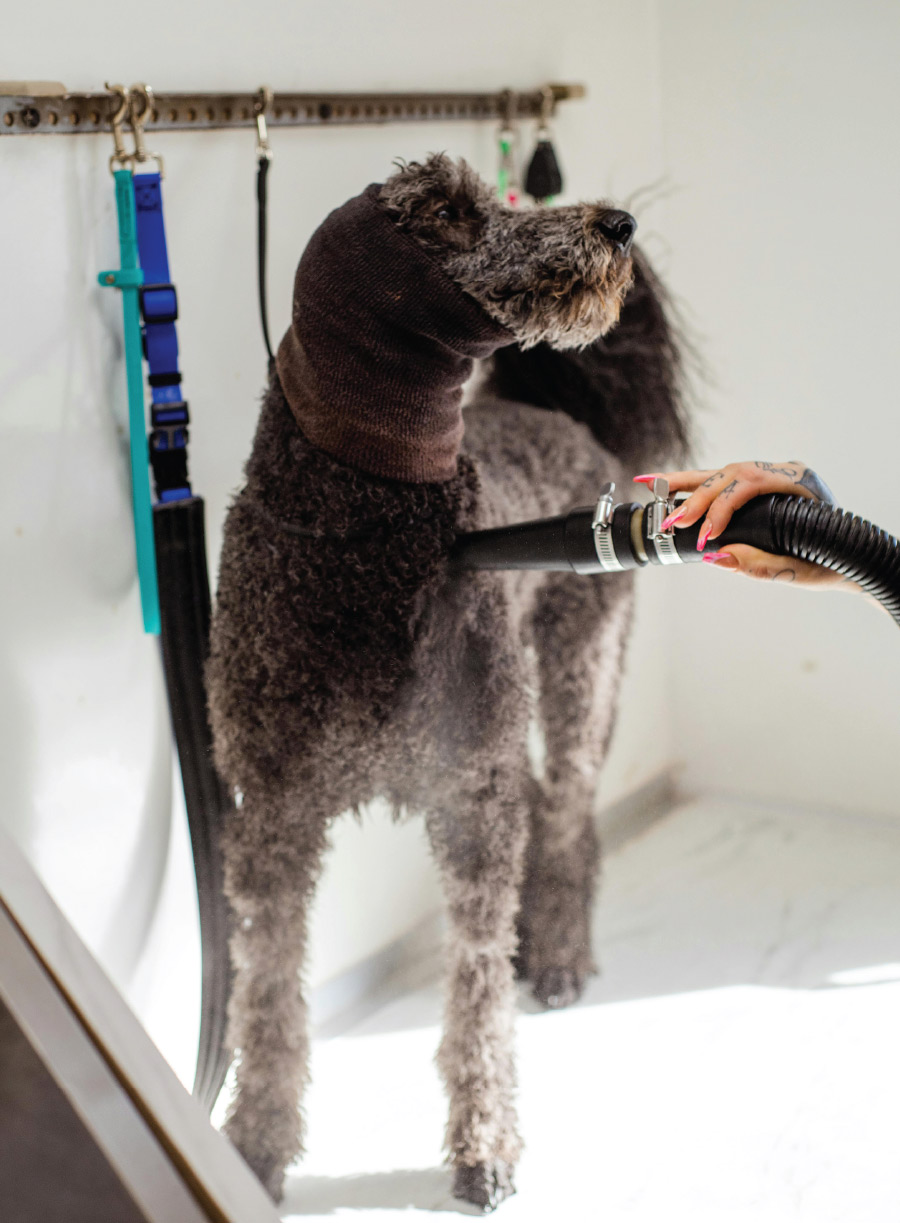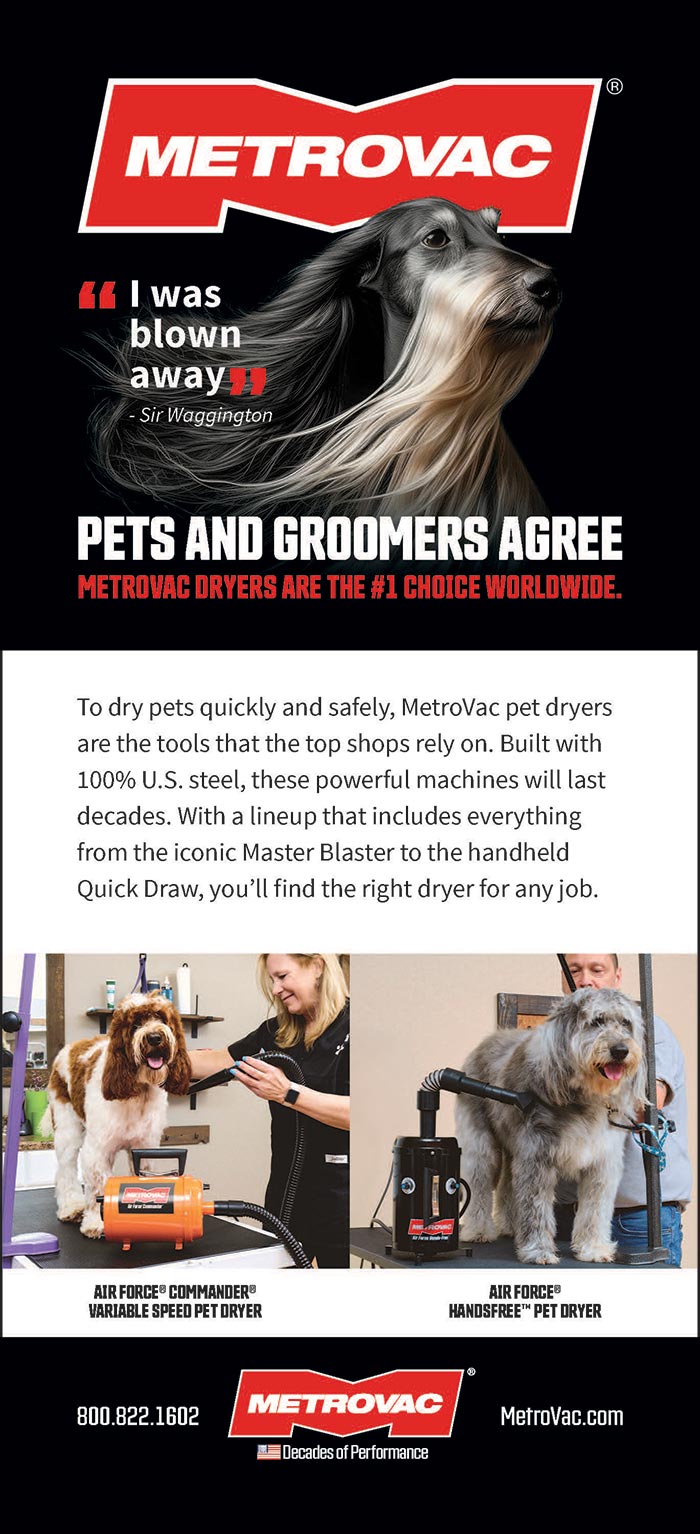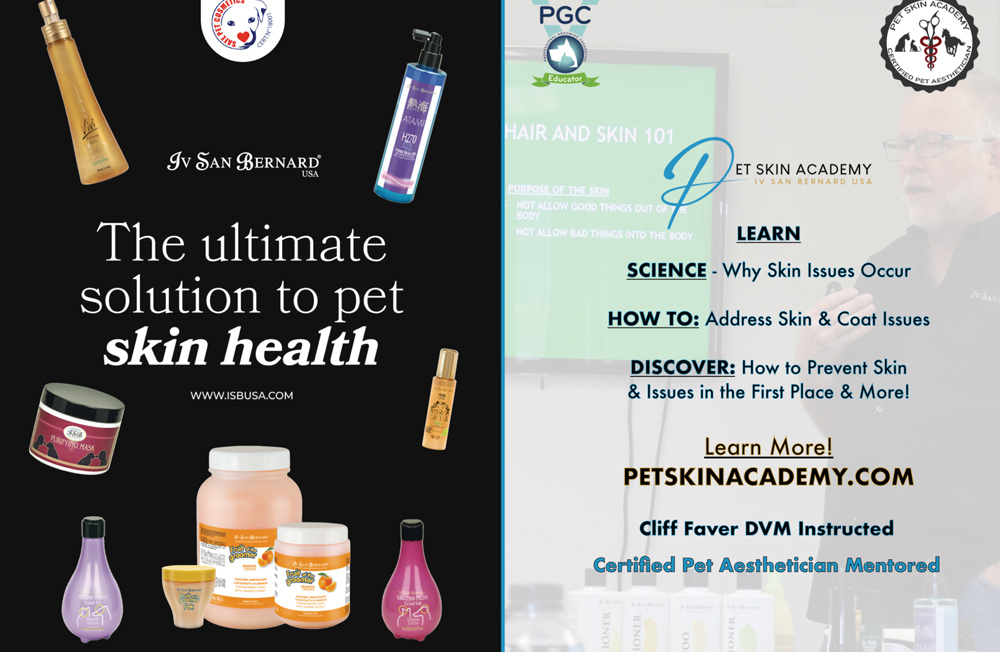

by Daryl Conner
 hether you are grooming a smooth-coated Chihuahua, a full-coated Old English Sheepdog or anything in between, a complete groom includes getting that pet clean and fully dry. And depending on the pet you are working on, drying can take up a considerable portion of the time you allot for the grooming process on each pet.
hether you are grooming a smooth-coated Chihuahua, a full-coated Old English Sheepdog or anything in between, a complete groom includes getting that pet clean and fully dry. And depending on the pet you are working on, drying can take up a considerable portion of the time you allot for the grooming process on each pet.
While I know groomers who enjoy the drying process, I’m not one of them. I can’t wait to have the dog on my table dry so I can get down to what I consider to be the “fun stuff”—brushing and styling. It is safe to say that most dogs are not fans of the drying process, either.
The good news is, there are liquid tools that help shorten the amount of time you spend getting a pet from drenched to dry—and they really work! The most common are sprays and shampoos that have been developed specifically for the purpose of helping to dry coats more quickly, and with good reason. They are formulated with a proprietary ingredient that encourages water to bead on top of the hair shaft rather than being absorbed. Once the water is beaded there, it is easier to remove by toweling, fluff- or force-drying.
Modern, water-soluble silicones are widely used in both human and pet skin and hair care products. Unlike the silicones of yesteryear, they don’t build up in the hair.
I have done timed drying tests, using a drying product on one half of the dog and stationing a groomer on each side with the same kind of dryer. My very non-scientific experiment made me a believer. The side we used the drying product on really did finish faster.
Pet grooming products containing silicone also help dry pets faster while offering other benefits to the groomer. Modern, water-soluble silicones are widely used in both human and pet skin and hair care products. Unlike the silicones of yesteryear, they don’t build up in the hair. Today’s silicones are hydrophobic and work by coating each individual hair shaft to smooth the cuticle (outer layer), effectively creating a water-repellent barrier. So instead, the water remains on the surface where it can be more easily absorbed by towels and mechanically removed with the heat and airflow from the pet dryer. They also make detangling and deshedding pets easier and leave the coat more manageable. You can find silicone in some shampoos, conditioners and sprays, and some can even be added to the final rinse.
- Make sure the pet is extremely clean before attempting to dry it. Natural oils and dirt not removed during the bath will help hold onto moisture, prolonging drying time and resulting in coat that isn’t easy to style.
- Remove as much water from the coat as possible before it ever reaches your drying table. Manually squeeze water with your hands, use super-absorbent towels until no dripping water is visible, then dry with a thirsty terry cloth towel. Allow the dog to have a few good shakes—they are amazingly efficient at water removal!
- If you are using a fast-drying or silicone-based spray, now is the time to apply it. Then, lightly brush the product through the coat to distribute the spray and open the coat by separating the hairs before you dry.
- Employ an absorbent surface on your grooming table. There are custom-made fabric drying table toppers, or you can simply put a dry towel or an absorbent door or bath mat on the table. They will not only catch water being sprayed off the coat, but also help to muffle the sound of the air from the dryer as it hits the table.
- Try holding a microfiber, terry cloth or super-absorbent towel behind the area of the pet you are drying. This will catch moisture from the air as you work and hold it, preventing it from returning to the animal.
- Make sure to dry pets in a well-ventilated area, or consider using a dehumidifier to ensure the air in your drying space is not overly saturated with moisture. If the air is humid, getting dogs thoroughly dry is nearly impossible.
- If you use a high-velocity dryer, take a break when the pet is about halfway dry to brush the coat lightly, then finish drying. For thick or curly coat types, this will speed things up.
Combining the appropriate liquid tools with a good dryer and great technique is key to shortening the time you spend drying the pets on your table. Both you and the pets you groom will appreciate your efforts to speed up the drying process!
- Bird, B. (2015, March 29). Silicones – Quest for Truth – Part One. Pet Groomer Magazine. https://petgroomermagazine.com/articles/ingredients/silicones-quest-for-truth-part-one/
- Bird, B. (2015, April 1). Silicones – Quest for Truth – Part Two. Pet Groomer Magazine. https://petgroomermagazine.com/articles/ingredients/silicones-a-quest-for-truth-part-two/
- Scott, S. & Bird, B. (Hosts). (2021, September 5). Equation for speedy drying (No. 308). [Audio podcast episode]. The GroomPod. https://www.podomatic.com/podcasts/susythegroomer/episodes/2021-09-04T21_25_51-07_00
- Scott, S. & Bird, B. (Hosts). (2023, March 1). Silicones and drying time, Recirculating bathing systems explained (No. 364). [Audio podcast episode]. The GroomPod. https://www.podomatic.com/podcasts/susythegroomer/episodes/2023-03-01T19_16_19-08_00


